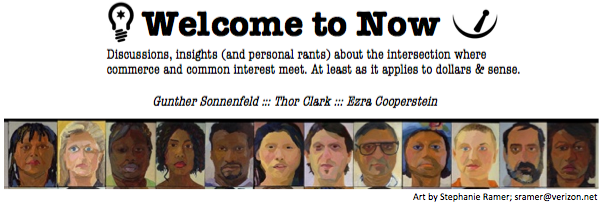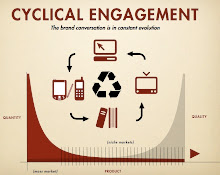
All the offices within the floorplan have been rearranged so that people from 'opposite disciplines' can share space and actually collaborate, even if they're not working on the same accounts and/or at the same time. For example, the head of the strategy & enablement group shares a space with the ECD. Agencies have always extracted meaning from culture (or redefined culture) to create new ideas. The difference here, however, is in building an environment where anyone and everyone is stimulated, and, one in which fictional or non-fictional elements of a narrative can actually be disseminated and adopted across entire groups of people. I've added elements to the floorplan to illustrate areas where transmedia development can be harnessed and nurtured. The red-bordered orange areas are the cultural hubs, where an entertainment context drives conversation around social, political, environmental or educational themes. For example, “Cinema & Gaming” is one hub, “TV & IPTV”, “Graphic Novels”, “Mobile/Digital” and “Any” are other hubs. At first glance, these may appear as more silos, but we must remember that these elements are reflexive, and so the idea is to give the environment as a whole some structure based on content or contextual interest. The blue areas are either conference rooms or shared office clusters where ideation can be discussed further and formalized at any given time. If a conference room is booked or an office cluster is occupied, the birthing areas – what you see in the turquoise stretches – can be utilized to declare ideas into existence and share them immediately with a co-worker, regardless of their title or role in the agency... Essentially, an ‘open office’ policy for creative ideation. This also sends another interesting message to co-workers: that no one is above or below the creative process. In fact, account people, analytics people and media planners are held to the same standard that experience architects, developers, strategists and art directors are. For one, it gives account leads an opportunity to embrace the work in a way that they can represent it altruistically, yet on their own terms. For another, it gives the 'thinkers' of the agency a better way of understanding the pains that account people and clients go through and make these considerations as they develop new ideas. This also cuts down on executive hubris and brings management more directly into the fold on some of the more intricate development being done inside the agency. Hopefully, this type of thinking will be adopted across the entire agency network, and can be also be applied to studios, schools and other creative businesses. I would love to hear your thoughts on ways we can expand this model, and adapt it to different working environments.








No comments:
Post a Comment